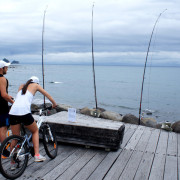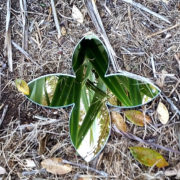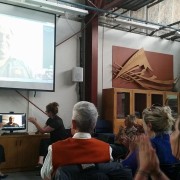SCANZ 2013: A groundwater resources portal for New Zealand
Authors: Alex Kmoch, Sheena Mannering-Tawera, Diane Bradshaw, Paul White and Hermann Klug
Abstract
New Zealand’s freshwater resources are extremely valuable but at the same time barely understood. Most of the surface waters are already allocated and groundwater resources are more and more demanded by society. With 80% of the presently allocated groundwater resources, agricultural business is demanding a share of already allocated water (White, 2006). However, New Zealand’s groundwater resource properties, like storage capacities or groundwater recharge are not well known. This might cause unsatisfactory and unsustainable developments. The regional councils in New Zealand are responsible for freshwater management, working under a common national legal framework, the management of water quality, water consents and water quantity measurement is a regional responsibility and so is data collection and storage.
Iwi/Māori have a well-recognised relationship with the natural environment which spans many centuries and is the result of interaction and adaptation with native flora and fauna of Aotearoa/New Zealand. Integral to this relationship is water which sustains life and is a taonga (treasure) with significant cultural and physical dimension. This is reflected through the on-going desire of many iwi/Māori groups to have a role in the way water is managed in New Zealand to ensure its sustainable utilisation moving forward (Kawharu, 2002). The development of scientific research tools and models that incorporate mātauranga Māori (Māori knowledge) and te reo Māori (the Māori language) are also beneficial to iwi/Māori resource policymakers, planners and decision makers.
GNS (Institute of Geological and Nuclear Sciences) has been collecting and compiling Māori terms on hydrology, geology and geothermal phenomena to, amongst other things, explore the contribution that traditional indigenous knowledge can make to the research outcomes and model development by identifying the cultural significance of groundwater and the associated cultural links with surface water (Tipa and Tierney, 2003, Boast, 1991). The potential benefits of creating research tools that utilise te reo Maori and mātauranga Māori (within government institutional settings) includes generating increased uptake in and familiarity with te reo Māori and exposure of te reo Māori as a minority language to broader audiences. Further research could identify gaps in the dual knowledge systems (either the western scientific knowledge paradigm, or mātauranga Māori) that could be explored as an outcome of this combined research (De Bres, 2008).
In order to provide a seamless spatial and multi-purpose view of collected groundwater related datasets, the SMART project joins forces to establish a valuable basis for groundwater analysis and decision support tools (Kmoch et al., 2012, Klug et al., 2011). One of the project’s objectives is to build a web-based data and knowledge portal and attached three-dimensional web visualisation tool according to OGC and ISO compliant standards (OGC, 2012).
To support te reo Māori and mātauranga Māori within the SMART portal web mapping and catalogue application, we evaluate a multi-language concept to incorporate semantic web methodologies to map and connect English and Māori terms and descriptions of presented natural phenomena as well as metadata and descriptive text within the application (Lutz et al., 2009). Beside a language template system for in-application-navigation use, a vocabulary web service based on a RDF/SKOS (Simple Knowledge Organisation System) database and an OGC CSW Catalogue server will be implemented to express structure and content of concept schemes such as thesauri, classification schemes, taxonomies, metadata and other types of controlled vocabulary. RDF/SKOS will be used to document, link and merge concepts/terms to be with other spatial and non-spatial data (Antoine Isaac and Ed Summers, 2008). Evaluation of the lexicon’s effectiveness will be measured in part by its ability to be applied successfully to the SMART portal web mapping and cataloguing application.



